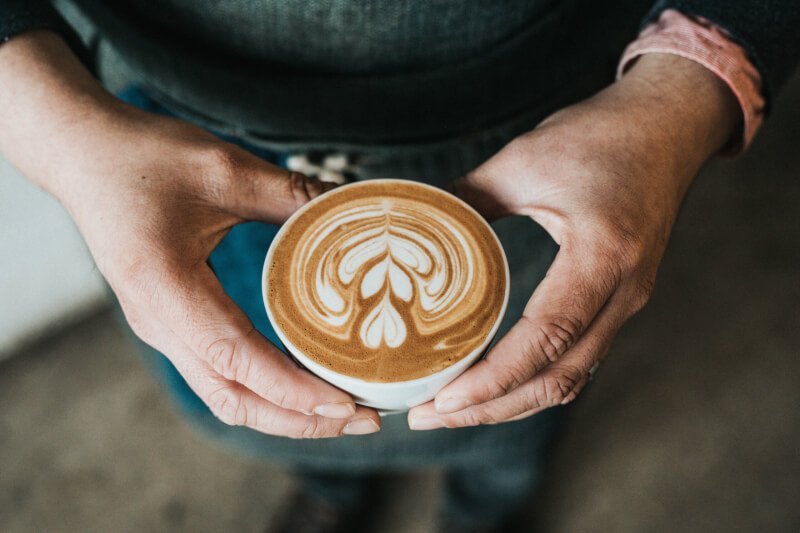Let’s talk about everyone’s favorite morning pick-me-up: coffee! Have you ever wondered what type of coffee Americans consume the most? Well, look no further! In this article, we’ll explore the preferences and favorites of coffee-loving Americans, providing insight into the beloved brew that fuels their daily lives. From bold espressos to creamy lattes, prepare to discover just how America takes its coffee.
Popular Types of Coffee in America
Drip Coffee
Drip coffee is a classic and popular choice among Americans. It is made by pouring hot water over coffee grounds placed in a filter, which then drips into a pot or carafe. Drip coffee is known for its simplicity and accessibility, making it a staple in households and offices across the country.
Espresso
Espresso is a concentrated form of coffee that is made by forcing hot water through finely ground coffee beans under high pressure. This method extracts the flavors and caffeine quickly, resulting in a strong and bold coffee. Espresso is the foundation of popular coffee beverages like cappuccinos, lattes, and americanos.
Iced Coffee
Iced coffee has gained popularity in recent years, particularly during the warmer months. It is simply cold brewed or chilled coffee served over ice. Iced coffee can be customized with added flavors, sweeteners, and milk, making it a refreshing option for those looking for a cool caffeine fix.
Cappuccino
Cappuccino is a popular espresso-based beverage that combines equal parts espresso, steamed milk, and milk foam. The layered presentation of the drink, with the rich espresso at the bottom, followed by velvety steamed milk and topped with frothy foam, has made cappuccinos a favorite choice for coffee enthusiasts.
Latte
Similar to cappuccinos, lattes are made with espresso and steamed milk. However, lattes have a higher ratio of milk to espresso, resulting in a creamier and more mellow flavor profile. Lattes can be customized with various syrups and flavors, catering to individual preferences.
Americano
An americano is made by diluting espresso with hot water, resulting in a coffee that is less intense than a straight espresso shot but with a similar flavor profile. Americanos are a popular choice for those who enjoy the taste of espresso but prefer a larger volume of coffee.
Cold Brew
Cold brew coffee has seen a surge in popularity in recent years, particularly among millennials. It is made by steeping coffee grounds in cold water for an extended period, typically overnight, to extract a smooth and less acidic coffee concentrate. Cold brew is usually served over ice and can be enjoyed black or with added milk and sweeteners.
French Press
French press coffee is a full-bodied and robust brew that is made by steeping coarsely ground coffee in hot water for several minutes before pressing the plunger to separate the grounds from the liquid. This method allows for maximum extraction of flavors, resulting in a strong and flavorful cup of coffee.
Pour-Over
Pour-over coffee involves manually pouring hot water over a filter containing coffee grounds, allowing the water to drip through to a container below. This method allows for precision and control in the brewing process, resulting in a clean and flavorful cup of coffee. Pour-over brewing has gained popularity among coffee enthusiasts who appreciate the craftsmanship and attention to detail involved.
Instant Coffee
Instant coffee is a convenient and quick option for those on the go. It is made by freeze-drying or spray-drying brewed coffee, resulting in a soluble powder that can be rehydrated with hot water. Instant coffee is known for its convenience and accessibility, particularly in situations where brewing fresh coffee may not be possible.
Regional Coffee Preferences
East Coast
On the East Coast of the United States, drip coffee and traditional favorites like cappuccinos and lattes are popular choices. Many people on the East Coast prefer a strong and robust cup of coffee to kick-start their day. Additionally, cold brew and iced coffee have gained significant popularity, especially during the summer months.
West Coast
The West Coast has a vibrant coffee culture, with a preference for artisanal and specialty coffee. Espresso-based drinks, such as lattes and cappuccinos, are commonly enjoyed by West Coast coffee enthusiasts. The region is also known for its love of cold brew, as the warmer climate makes it a refreshing choice year-round.
Midwest
In the Midwest, drip coffee remains a popular choice. The region embraces a more classic and traditional approach to coffee, with an emphasis on a rich and bold flavor profile. However, there is also a growing interest in specialty coffee, with an increasing number of cafes offering pour-over and other artisanal brewing methods.
South
In the Southern states, sweet and flavored coffee options are frequently enjoyed. Iced coffee, particularly sweet tea-flavored variations, is a popular choice, especially during the hot and humid summers. Traditional options like drip coffee and espresso-based drinks are also prevalent.
Pacific Northwest
The Pacific Northwest has a thriving coffee culture, with a strong preference for sustainably sourced and locally roasted coffee. The region is known for its love of dark and medium roasts, highlighting the unique flavors of the beans. Pour-over and French press brewing methods are highly regarded, allowing coffee enthusiasts to experience the full range of flavors in their cup.
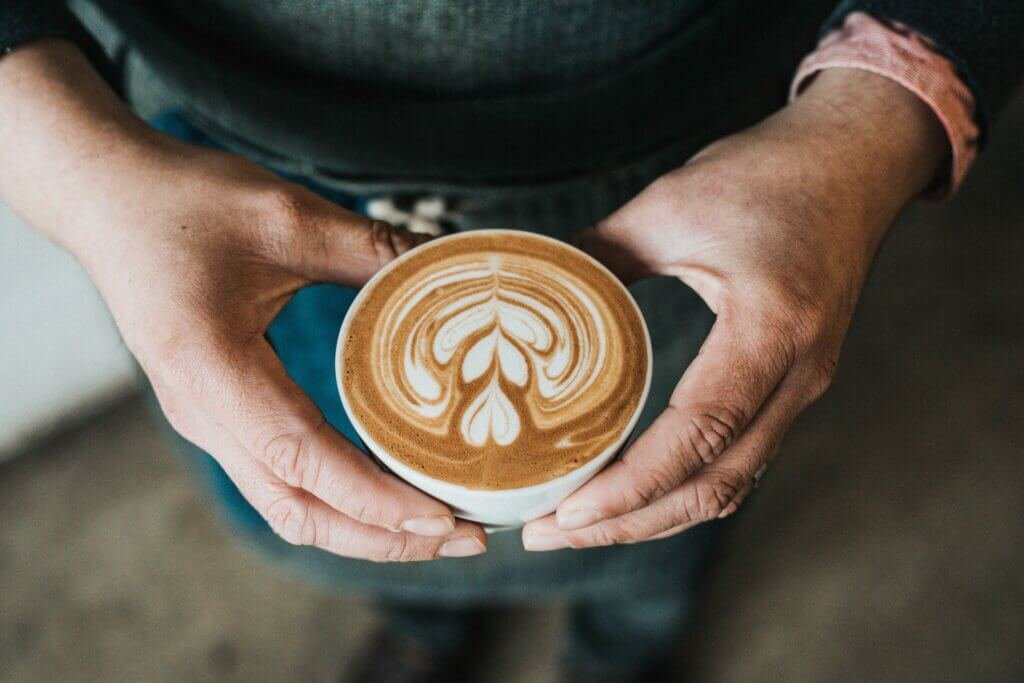
Factors Influencing Coffee Preference
Culture and Tradition
Coffee preferences often reflect cultural and regional traditions. For example, regions with a strong Italian influence may have a higher preference for espresso-based drinks, while areas with a British influence may lean towards tea or other hot beverages. Cultural practices, such as a morning coffee ritual or socializing over a cup of coffee, also play a role in shaping preferences.
Accessibility and Convenience
The availability and convenience of different types of coffee can heavily influence preference. Drip coffee, for instance, is widely accessible and easy to make at home or in the office, making it a go-to choice for many Americans. On the other hand, specialty coffee options may be more limited in availability, but their popularity has grown as more cafes specializing in these offerings have emerged.
Advertising and Marketing
Advertising and marketing campaigns play a significant role in shaping coffee preferences. The branding, packaging, and messaging employed by coffee companies can make a particular type of coffee more appealing and desirable to consumers. Clever marketing strategies have introduced new trends and flavors, ultimately influencing choices and preferences.
Health and Dietary Considerations
Many people consider health and dietary considerations when choosing their coffee. Some may opt for decaffeinated coffee options or seek out low-acid options to avoid digestive issues. Additionally, the rise of alternative milk options, such as almond, soy, and oat milk, has allowed individuals with dietary restrictions or preferences to enjoy their coffee without compromising on taste or values.
Price
Price is also a significant factor influencing coffee preference. While some may be willing to pay a premium for specialty coffee or gourmet options, others may seek more budget-friendly choices. The affordability and value for money associated with certain types of coffee can heavily influence preferences, particularly among cost-conscious individuals.
Coffee Consumption Trends
Increased Consumption of Specialty Coffee
In recent years, there has been a notable increase in the consumption of specialty coffee. As consumers become more discerning and knowledgeable about coffee, they are willing to explore unique flavors, origin stories, and brewing methods. This trend has led to the rise of specialty coffee shops and a greater demand for high-quality and ethically sourced beans.
Preference for Lightly Roasted Coffee
There has been a shift towards the preference for lightly roasted coffee among coffee enthusiasts. Lighter roasts are known for their brighter acidity, distinct flavors, and emphasis on the unique characteristics of the beans. This preference reflects a growing interest in experiencing the nuanced flavors and complexities that different coffees can offer.
Growing Demand for Organic and Fair Trade Coffee
As consumers become more conscious of the environmental and social impact of their choices, there has been a growing demand for organic and fair trade coffee. Organic coffee is grown without the use of synthetic pesticides or fertilizers, while fair trade certification ensures that farmers receive fair payment for their products. These certifications address concerns related to sustainability, environmental stewardship, and social justice.
Shift Towards Coffee At-Home
With the rise of remote work and changes in lifestyle, there has been a significant shift towards coffee consumption at home. Many individuals have invested in home brewing equipment, such as espresso machines, drip brewers, and pour-over setups, to recreate the coffee shop experience in the comfort of their own homes. This trend has been further amplified by the COVID-19 pandemic, which led to the temporary closure of cafes and encouraged individuals to adopt home brewing as a new hobby.
Rise of Coffee Subscription Services
Coffee subscription services have become increasingly popular among coffee enthusiasts and those seeking convenience. These services deliver freshly roasted coffee straight to subscribers’ doors on a regular basis. Coffee subscription services offer a variety of coffee types, origins, and flavor profiles, allowing subscribers to explore different coffees without leaving their homes. This trend highlights the demand for personalized and curated coffee experiences.
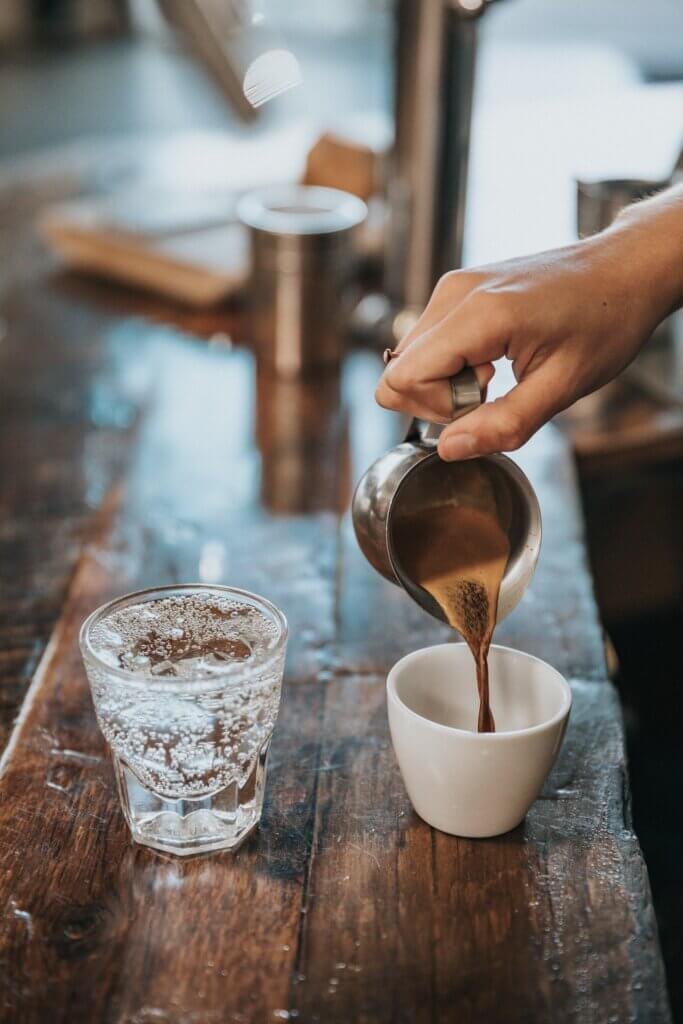
The Rise of Coffee Chains
Starbucks
Starbucks, one of the most well-known coffee chains in the United States, has played a significant role in shaping coffee culture and preferences. With its extensive menu and focus on customization, Starbucks has popularized coffee beverages like the Frappuccino and Pumpkin Spice Latte. Starbucks’ branding and ambiance have created a sense of community and familiarity, making it a go-to choice for many Americans.
Dunkin’
Dunkin’, formerly known as Dunkin’ Donuts, is another prominent coffee chain that has a strong presence in the United States. Known for its classic drip coffee and signature donuts, Dunkin’ has established a loyal following across the country. The affordability and accessibility of Dunkin’ have made it a popular choice for those seeking a quick and convenient coffee fix.
McDonald’s
McDonald’s, a fast-food giant, has also made a mark in the coffee industry. With its McCafé line, McDonald’s offers a variety of coffee beverages, ranging from brewed coffee to lattes and mochas. McDonald’s focus on value, coupled with its widespread presence, has made it a go-to option for many Americans looking for an affordable cup of coffee.
Peet’s Coffee
Peet’s Coffee, founded in Berkeley, California, has earned a reputation for its dedication to sourcing and roasting high-quality beans. Peet’s offers a wide range of coffee options, including their signature dark roasts, espresso, and specialty beverages. Peet’s has cultivated a strong following among coffee aficionados who appreciate the craftsmanship and attention to detail in each cup.
Tim Hortons
Tim Hortons, a Canadian coffee chain, has gained popularity in certain regions of the United States, particularly in parts of the Northeast and Midwest. Known for its coffee and freshly baked goods, Tim Hortons offers a cozy and welcoming atmosphere for customers. Its distinct brand identity and menu options have resonated with many Americans seeking a taste of Canadian-style coffee.
Dutch Bros Coffee
Dutch Bros Coffee, a drive-thru coffee chain, has experienced rapid growth and popularity in recent years. Known for its vibrant and energetic staff, Dutch Bros offers a wide array of coffee drinks, including their signature “Dutch Bros” blend. The chain’s commitment to customer service and quality has garnered a strong following, particularly among younger coffee enthusiasts.
Caribou Coffee
Caribou Coffee is a Minnesota-based coffee chain that places a strong emphasis on sustainability and community engagement. Caribou sources Rainforest Alliance Certified and Direct Trade beans, ensuring that their coffee is not only delicious but also ethically sourced. With a cozy and rustic ambiance, Caribou Coffee aims to create a warm and inviting space for its customers.
The Coffee Bean & Tea Leaf
The Coffee Bean & Tea Leaf, founded in Southern California, has become known for its extensive selection of both coffee and tea beverages. With a focus on quality ingredients and unique flavor combinations, The Coffee Bean & Tea Leaf has attracted a diverse customer base. The chain’s commitment to sustainability and responsible sourcing further enhances its appeal to environmentally conscious consumers.
Coffee Culture
Coffee Culture, a regional coffee chain primarily located in New York State, offers a cozy and comfortable atmosphere for customers to enjoy their coffee. Known for its freshly roasted beans and handcrafted beverages, Coffee Culture has built a strong reputation for quality and consistency. The chain’s dedication to supporting local communities has also contributed to its popularity among locals.
Impact of Coffee Trends on Small Local Cafes
Competition from Chains
Small local cafes often face competition from larger coffee chains, which have the advantage of brand recognition, marketing budgets, and economies of scale. However, small local cafes can differentiate themselves by focusing on unique offerings, personalized customer experiences, and creating a sense of community.
Opportunities for Unique Offerings
Coffee trends present opportunities for small local cafes to stand out by offering unique and specialty coffee options. By sourcing and roasting their own beans or partnering with local roasters, cafes can offer a curated selection of high-quality and distinctive coffees. Additionally, cafes can experiment with different brewing methods and flavor profiles to cater to customers seeking new and exciting coffee experiences.
Focus on Quality and Sustainability
Small local cafes can carve out a niche by emphasizing quality and sustainability. By sourcing beans from organic and fair trade farms, cafes can attract environmentally conscious consumers who prioritize ethical practices. Additionally, investing in staff training and equipment can help ensure that every cup of coffee is crafted with care and attention to detail.
Community Engagement and Support
One advantage that small local cafes have is their ability to foster a sense of community and support. By hosting events, partnering with local organizations, and showcasing local artists or musicians, cafes can become gathering places that offer more than just caffeine. Building relationships with customers and engaging with the local community can help small cafes thrive in the face of competition.
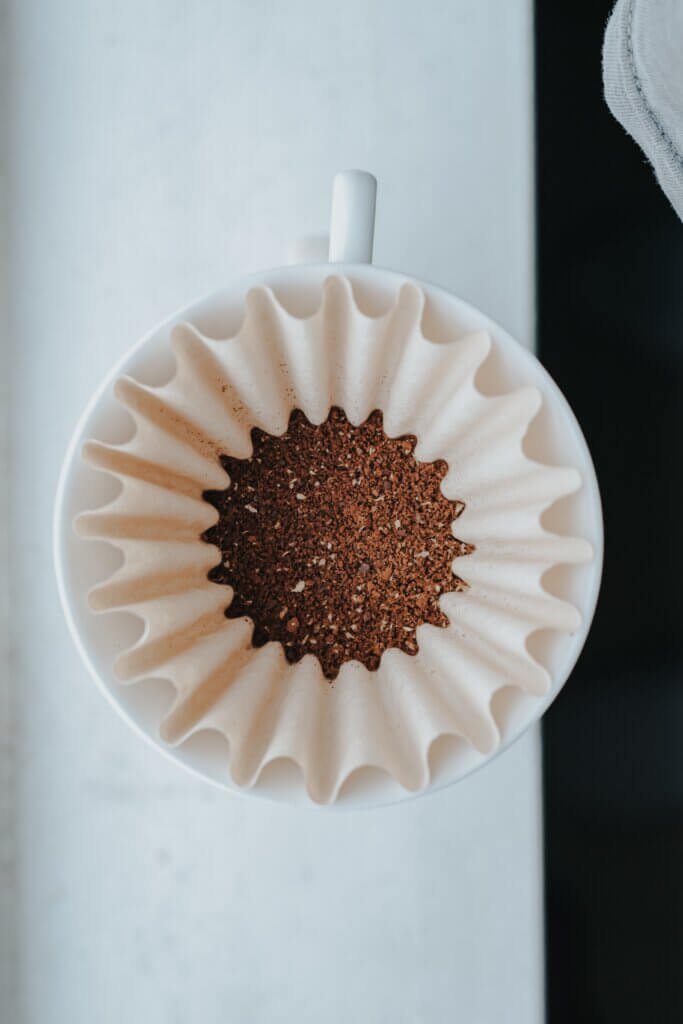
Social and Cultural Associations with Coffee
Coffee as a Morning Ritual
For many Americans, coffee is an integral part of their morning routine. The process of brewing and enjoying a cup of coffee can signal the start of a new day, providing a moment of calm and reflection before the busyness begins. Coffee’s aroma and taste become associated with the comfort and familiarity of the morning, setting a positive tone for the day ahead.
Coffee as a Social Beverage
Coffee has long been a social beverage, bringing people together for conversations and gatherings. Whether it’s catching up with friends over a cup of coffee or meeting colleagues for a business meeting, coffee acts as a catalyst for social interaction. Cafes, with their inviting atmosphere and comfortable seating, provide the perfect setting for these social connections to flourish.
Coffee Culture and Identity
Coffee has become more than just a beverage – it has become part of people’s identities. The choices individuals make regarding the type of coffee they consume and the cafes they frequent can reflect their personal tastes, values, and lifestyle choices. Coffee culture has become a way for individuals to express themselves and connect with like-minded individuals who share a passion for coffee.
Coffee in the Workplace
Coffee plays a vital role in the workplace, providing employees with a much-needed energy boost and a momentary break from work. The act of taking a coffee break has become ingrained in many work cultures, fostering camaraderie and facilitating informal conversations among colleagues. Coffee has also become a symbol of productivity and motivation, with many individuals relying on it to stay focused and alert throughout the workday.
Future Trends and Predictions
Rise of Alternative Milk Options
The rise of alternative milk options, such as almond, soy, and oat milk, is expected to continue in the future. As more individuals adopt plant-based diets or seek alternatives to dairy, cafes and coffee shops will likely expand their milk offerings to cater to a broader range of dietary preferences and restrictions.
Coffee Innovations and Blends
Innovation in coffee brewing methods and blends will likely continue to shape the coffee industry. From innovative brewing techniques to unique flavor combinations, cafes will strive to offer new and exciting coffee experiences. Additionally, experimentation with non-traditional ingredients, such as spices and botanicals, may lead to the development of innovative coffee blends and flavors.
Sustainability and Ethical Sourcing
The focus on sustainability and ethical sourcing is expected to grow in the coffee industry. As consumers become increasingly aware of the environmental and social impact of their choices, they will seek out coffee options that align with their values. Cafes and coffee companies that prioritize sustainability and transparency in their supply chains are likely to gain a competitive edge.
Integration of Technology in Coffee Consumption
The integration of technology in coffee consumption is already evident, with the rise of mobile ordering and contactless payment options. In the future, cafes may further leverage technology to enhance the customer experience, such as personalized recommendations based on individual preferences and past orders. Additionally, advancements in coffee brewing machines and smart home devices may allow for more precise control over brewing variables, resulting in an even more customized coffee experience.
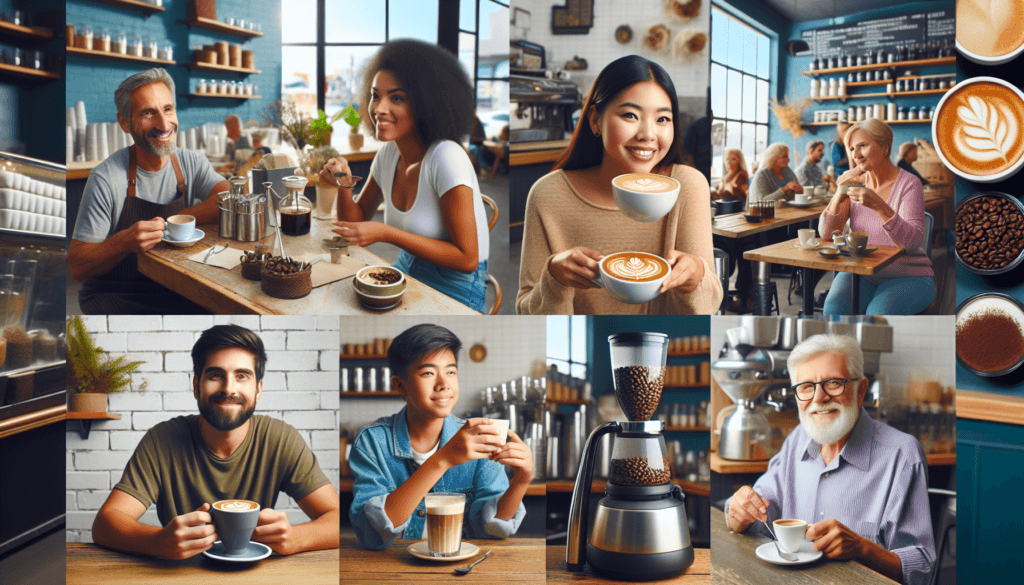
Conclusion
The coffee landscape in America is diverse and continually evolving. From classic drip coffee to specialty blends and innovative brewing methods, coffee preferences reflect cultural traditions, accessibility, and individual tastes. Coffee consumption trends showcase a shift towards specialty coffee, organic and fair trade options, and an increased focus on coffee at home. Coffee chains have played a significant role in shaping the industry, but small local cafes can thrive by offering unique experiences, focusing on quality and sustainability, and engaging with their communities. Coffee holds social and cultural associations, acting as a morning ritual, a social beverage, and a symbol of identity. Looking ahead, future trends point towards alternative milk options, coffee innovations, sustainability, and the integration of technology in coffee consumption. As coffee continues to be a beloved and influential part of American culture, the choices we make when it comes to our daily cup of joe will continue to shape the industry and our experiences with this beloved beverage.

